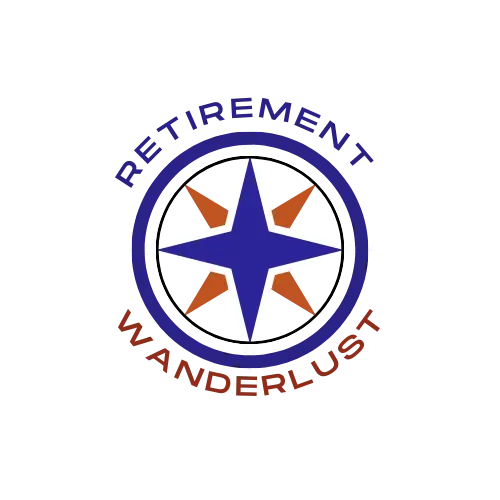As a full-grown man who’s spent most of my life working in a corporation, I’ve been asking myself this question a lot lately- how long does it take to adjust to retirement? Retirement is a significant life transition, and understandably, it takes time to adjust. The time frame isn’t set in stone; it can range from weeks to years, depending on the individual. Every person’s experience differs, influenced by their specific circumstances.
Settling into retirement, for some, might only take a few months, while for others, it could stretch over a year or longer. The key is to be patient with yourself, giving yourself the necessary time and effort to adjust. Your ability to adapt to retirement can be significantly influenced by the resources you have at your disposal during the transition, and I’m not just talking about financial resources. A strong network of family and friends, good mental and physical health, a sense of purpose, and a well-thought-out retirement plan can make the transition smoother.
Table of Contents
Pre-Retirement: Planning for the Next Stage
The pre-retirement stage is a critical phase where you visualize your new life and plan for it. This stage can span several years before your actual retirement date. It’s a time when people shift their focus from career-building to financial planning for retirement. However, the emotional process of preparing for retirement often gets overlooked. It’s equally important to plan for the emotional aspects of retirement, including finding purpose, joy, and fulfillment.
At this stage, I must consider what will make me happy and fulfilled as I transition into retirement. Making lifestyle decisions, like downsizing for more financial freedom, can also contribute to my emotional well-being.
For many, this stage is a time of excitement and anticipation, but it can also be a time of anxiety and uncertainty. Planning for both financial and emotional well-being can make the transition smoother, and this is what I intend to do.
Mapping Out Your Journey to Retirement
As I approach retirement, I’ve realized that a well-structured plan can make a difference. It’s not just about finances; it’s about mapping out a journey that includes identifying activities that will keep me engaged and fulfilled. It’s about charting a course that allows me to explore new interests and hobbies, spend time with loved ones, and maintain a healthy lifestyle.
Creating my retirement roadmap has become an exciting project. It’s a chance to design a lifestyle that aligns with my interests, health needs, and personal goals. And let me tell you; it’s a great feeling to know that I’m actively planning for the next stage of my life, which promises to be just as fulfilling, if not more so, than my working years.
Considering the Emotional Stages of Retirement
Understanding the emotional stages of retirement is crucial in preparing for this life transition. No one likes emotional stress, not me. Retirement is an emotional journey. It often involves feelings of excitement, anxiety, and even fear. These emotions can present challenges that may be as daunting as financial planning.
It’s necessary to acknowledge these feelings as part of my pre-retirement transition. Recognizing and addressing these emotional stages can help me navigate retirement with greater ease and confidence. I know it’s okay to have mixed feelings about retirement. The key is to understand these emotions and plan for how to manage them.

Understanding the Pathway to Retirement Adjustment
Understanding the pathway to retirement adjustment can be a useful guide in your journey. There’s no set time frame for this adjustment. Some find their rhythm a few months into retirement, while for others, it may take a year or more to feel settled into retirement, and as funny as it may appear, I’m yet to determine how long it will take me to adjust- maybe two years or more.
The adjustment to retirement is not purely financial. It involves adapting to a new lifestyle, managing time, and finding new ways to find purpose and fulfillment.
The Initial Rush: The Honeymoon Phase
They say there is always a first time for everything, and the first retirement stage often called the honeymoon stage, is exhilarating. This period can last several weeks or even a year, with a sense of freedom from the daily work routine. They say it’s a chance to let off some steam and start enjoying your life without the pressures of work. It feels like a permanent vacation, filled with retirement celebrations and a newfound sense of freedom. The world seems full of possibilities, and I can finally do whatever I want without having to report to anybody.
However, with all this freedom and time to spare, the honeymoon stage can also bring about feelings of anxiety and uncertainty. It’s a thrill to be on a permanent vacation, but the idea of an eternal holiday can feel purposeless. It’s important to remember that this is a phase, a time to rest and recuperate and plan out some long-term goals.
Embracing Freedom: Activities During the Honeymoon Phase
This retirement stage is all about making the most of my newfound freedom. The honeymoon stage is about exploring, experimenting, and enjoying life on my terms. It’s about taking long walks in the park, spending quality time with family members, or picking up a new hobby that has always intrigued me.
It’s a time when I redefine what ‘work’ means to me. Now, work means whatever I want it to mean, whether gardening, writing, traveling, or volunteering. The honeymoon stage is all about embracing freedom and truly enjoying your life.
The Question Phase: The Disenchantment Period
After the initial rush of the honeymoon stage, the disenchantment period begins. This phase could be challenging to navigate as it often brings feelings of restlessness, boredom, and dissatisfaction. I know some relatives who didn’t understand this phase, and at this period, the reality of retirement sinks in. The novelty of the permanent vacation wears off, and they find themselves asking, “Now what?” It’s easy to feel aimless and unfulfilled during this retirement stage, even with a long to-do list.
This is the time to set new goals and find new ways to fill my time meaningfully. It’s important not to follow suggestions from others blindly but to consider what I genuinely want out of retirement. It’s a time of introspection, of figuring out what brings me joy and fulfillment apart from work. It’s a challenging period, but it’s also a necessary step in the journey towards a fulfilling retirement.
Overcoming the “Now What?” Dilemma
Overcoming the “Now What?” dilemma requires a shift in perspective. Instead of viewing retirement as a time of inactivity, I see it as an opportunity to explore new interests and pursuits. This could mean picking up a new hobby, volunteering for a cause close to my heart, or even exploring part-time work or consulting in a field I’m passionate about.
The key is to remember that retirement isn’t about doing nothing—it’s about doing what I love. It’s about finding new ways to stay active, engaged, and fulfilled. It’s about redefining my purpose and finding new ways to contribute and make a difference.
Paving a New Path: The Reorientation Phase
As I try to understand what comes with retirement, I have also come to understand that following the disenchantment stage comes the reorientation phase, a period of redefining and reinventing myself. Retirement may feel like a loss of identity at first, with my job being a central part of my identity for so many years. However, this reorientation stage will allow me to take stock of my life and reassess my priorities.
This phase might bring uncertainty as I will no longer have the same sense of purpose or routine from my working years. Yet, it’s also an exciting time, a chance to focus on who I truly am and what I want out of life. It’s a time of self-discovery and growth, of paving a new path in this exciting journey called retirement.
Reinventing Yourself in Retirement
Approaching retirement is a significant rite of passage, offering the opportunity for personal growth and transformation. It’s a time when you can redefine yourself beyond your career identity. This stage of life opens up many opportunities to explore interests and pursuits that you may have put aside during your working years.
Research has shown that focusing on meaningful activities during retirement can significantly enhance quality of life. Dear friend, who wouldn’t want to enhance his quality of life after years of turmoil in the corporate environment? Whether joining clubs and groups that align with my hobbies or dedicating time to a cause close to my heart, retirement presents a chance to invest in my passions and interests. It’s an exciting journey of self-discovery and reinvention.
Achieving Normalcy: The Stability Phase
The stability stage of retirement is a period of adjustment, where the initial highs and lows settle into a steady rhythm. It’s when you come to terms with your retirement identity and incorporate it into your daily life. This stage can be a time of contentment as you establish a routine that balances relaxation with purposeful activities.
During this phase, I must navigate the ups and downs with a positive mindset. Indeed, there may be challenges, such as dealing with retirement-induced depression and anxiety. Regular exercise, maintaining social connections, and focusing on personal growth, I believe, can all aid in achieving a sense of normalcy and finding fulfillment in this new life.
Establishing Your Retirement Routine
Establishing a routine in retirement has been a journey of its own, full of its highs and lows. But it is through this process that I have truly come to understand my retirement identity. I’ve found a rhythm in my days, a balance between activities I enjoy and tasks I need to accomplish.
My routine has provided a structure to my day, something that initially needed to be improved when I first retired. It’s a good mix of physical activities, social engagement, and personal pursuits. It’s flexible yet provides a sense of normalcy and stability to my retirement life.

Retirement: The Journey to Discovering Your New Purpose
Retirement is more than just an end to a professional career; it’s the start of a new chapter where you can explore, learn, and discover new purposes. It’s a journey that unfolds over time, revealing new opportunities for growth and fulfillment. As I prepare for my retirement, I am eager to embrace this exciting adventure.
With the right mindset and a willingness to adapt, retirement can be an enriching phase. It’s a time to redefine your purpose and seek experiences that bring joy, meaning, and satisfaction. I look forward to starting this new journey and discovering what retirement has in store.
Exploring Opportunities in Retirement
Retirement offers a canvas to paint your picture of daily life. It’s a time to explore opportunities that may have been impossible during your working years. From pursuing hobbies to learning new skills, volunteering, or even starting a small home-based business, the options are vast and varied.
Every individual’s retirement journey is unique and can take time to adjust. Patience is key during this transition. As I plan my retirement, I am excited to explore the opportunities that await. With careful planning, a positive attitude, and an open mind, I am confident this next phase of life will be full of enriching experiences and personal growth.
Consider Home Workouts and Other Health-Related Activities
Leaving the workforce doesn’t mean leaving behind a healthy lifestyle. Retirement is the perfect time to focus on health and wellness. One way to keep fit and active is to consider home workouts. These can range from light exercises like yoga and stretching to more strenuous activities like weight lifting or high-intensity interval training.
Of course, health isn’t just about physical fitness. It’s also about mental and emotional well-being. Exploring other health-related activities like meditation, reading, or learning new hobbies can provide a balanced approach to wellness. Remember, staying healthy in retirement is all about finding a routine that works for you and keeps you motivated.
Maintaining Health and Happiness in Retirement
As I continue on my retirement journey, I’ve discovered that maintaining my health, both physical and mental, is crucial for a fulfilling and enjoyable retirement life. It’s not just about having the time to do whatever I want but also being physically and mentally capable. This is why I’ve committed myself to cultivating healthy habits, which have been instrumental in ensuring my well-being.
Physical Health and Mental Well-being
One of the most challenging aspects of retirement is dealing with the changes it brings to my physical and mental health. I’ve noticed that my daily schedule has been greatly impacted, and I’ve had to adjust to cope with these changes. For instance, I’ve been waking up earlier and going to bed earlier as well. While it’s normal for sleeping patterns to change as we age, it’s important to ensure that these changes don’t lead to feelings of fatigue or stress.
Utilizing Online Therapy and Other Resources
Retirement can bring about many changes, and sometimes, it can be quite overwhelming. This is why I’ve found it beneficial to seek professional help when needed. Online therapy has been an excellent resource for me. It offers convenience, as I can schedule sessions on my own time, and it provides me with the necessary support and guidance to navigate the different stages of retirement.
Wrapping It Up: Your Retirement Story Begins Here
As I approach the end of my career employment, I can’t help but reflect on this significant chapter in my life. Retirement is a roller coaster of emotions, and it’s completely normal to experience a range of feelings – excitement, relief, anxiety, and even a hint of the retirement blues. The pre-retirement phase has been a journey of careful pre-retirement planning, and it’s crucial to remember that adjustment doesn’t happen overnight. It can take weeks, months, or even years to settle into a comfortable retirement routine fully.
According to various studies, including the longitudinal study of work after retirement published in the Journal of Health Economics and the Health and Retirement Study featured in BMC Public Health, adjustment to retirement is directly linked to many factors. That includes not just financial stability but also a strong network of family and friends, good mental and physical health, a sense of purpose, and a retirement plan that meets my needs. The Journal of Social and Personal Relationships also highlights the importance of social connections, reinforcing that the more resources – both social and psychological – I have, the easier it will be to adjust. So, as I sit down with a cup of coffee to write the next chapter of my life, I’m excited about the regular activities I’ve planned and the family tree I aim to explore. I’m also ready to face any mental health issues head-on and utilize resources to optimize my well-being among older adults and relieve stress. So, here’s to the start of a new adventure, and I want to enjoy myself forever!





Leave a Reply